A Small Whiff of STEM
“I smell cinnamon rolls!” exclaims Henry as he races through the gate towards our outdoor classroom.
Everyone stops what they are doing to inhale deeply.
“I do too! I want a cinnamon roll!” pleads Noah.

My group is quite disappointed to learn that I am not baking cinnamon rolls this morning. The delicious cinnamon-roll smell is wafting our way from a wholesale bakery half a mile away.
“The wind is in the right direction this morning!” Henry’s father chimes in, trying to redirect the hungry hordes of cinnamon-roll lovers as he beats a hasty exit.
Wind and weather have been popular topics this month because we’ve been spending a lot more time outside.
Our wind adventures began with the pinwheels in our outdoor area (see our STEM Pinwheel Play post from August 2, 2021). Since then, the wind has been a daily topic as we have continued our STEM adventures.
“If I don’t see or feel the wind, how can I smell the cinnamon rolls?” asks Evelyn.
This is a great opportunity for the children to use their five senses as they explore the topic of wind. First, I explain that wind is simply moving air. Sometimes we can see it blowing through trees or grass. When a very light breeze is blowing, we don’t even notice the wind unless we look up at the clouds or the tops of the trees and see the clouds moving or the branches swaying.
“Remember the storm last week?” Henry asks. “The rain was going sideways. That was a really windy day! ”
Henry then shares a bit of knowledge that leads us into a discussion about wind speed and direction.
“That was the day it was really hot outside and then we could feel it get much colder,” he recalls.
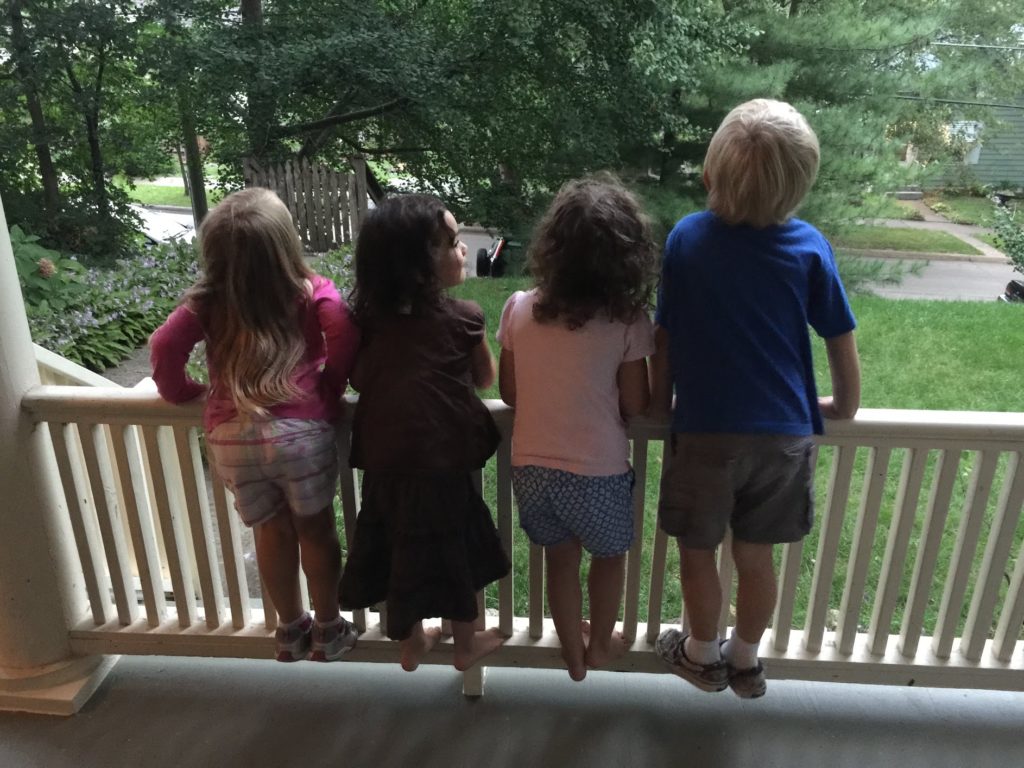
“Remember how we could smell the rain?” Jimmy’s voice is full of excitement as he begins to add more pieces to his understanding of weather, air and what rain smells like.
Wind is air in motion—and right now there are a lot of little brains that are also “in motion” as the children learn more about their world.
“If wind makes things move, can it make the cinnamon rolls blow over here so I can taste them?” asks Lauren.
Immediately, Hudson grabs a dandelion. “This is the bakery, I’ll send you some cinnamon rolls!” He blows on the dandelion seedhead (or “puffball” as our gang calls it), and we meet more math and science benchmarks. Children use all of their senses to understand and organize their experiences and environments—and today is no different!
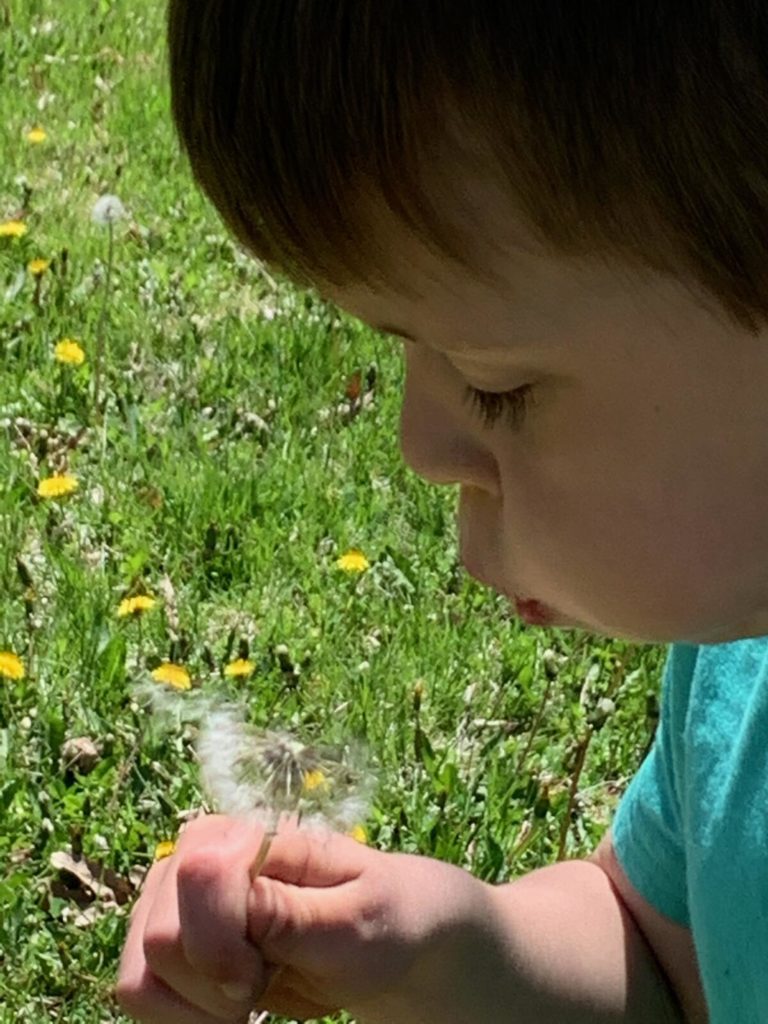
As children investigate, they gain knowledge that enhances their understanding of the world through a process known as scientific inquiry.
This is why our curriculum for the next day is often finalized after the discoveries of the current day. I use these moments of inquiry to set the stage for subsequent lessons with materials that will build on what the children have just learned.
The next day, I pulled out our tambourines, which are festooned with colorful streamers. We often use these tambourines for counting, pattern repetition, rhythms and games such as “Simon Says.” The children love watching the beautiful streamers undulate as they shake the tambourines to create sound and music. What a fun way for the children to experiment with STEM concepts such as wind, force and motion!
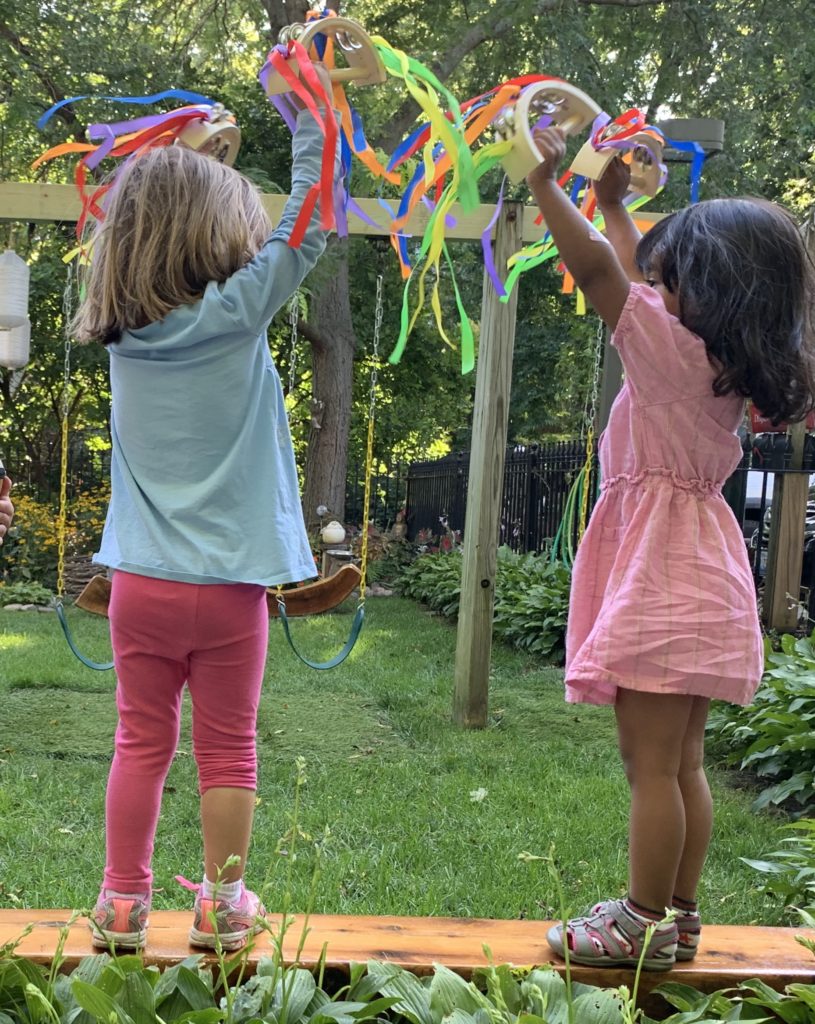
We also have wind chimes scattered around our outdoor play space. To create more opportunities for the children to see the wind in action—and encourage them to focus on the source and direction of the wind—I then brought out our play silks, parachutes and windsocks.
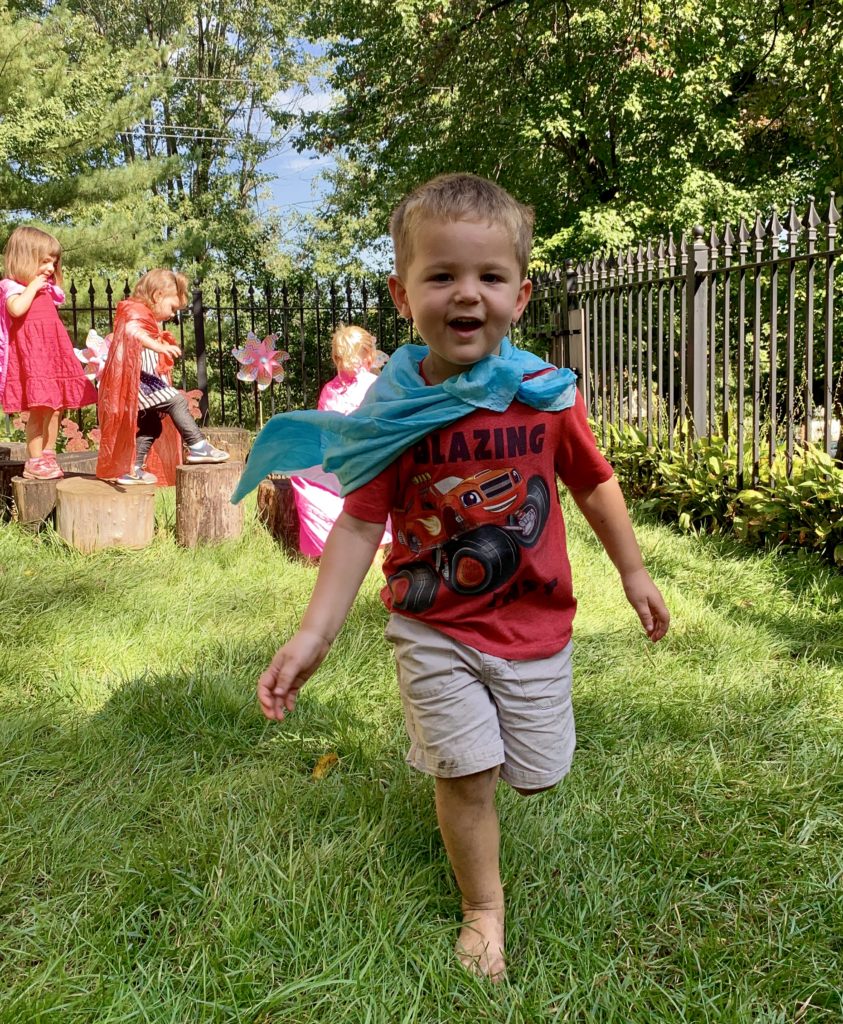
Later, we introduced silk scarves to create even more opportunities for experimentation with wind and force. Avery and Lauren (below) were quick to discover that, if they pushed or pulled hard, the scarves flew up or down faster. When they moved slowly and gently, the scarves floated in the wind. These simple cause-and-effect experiments were laying the foundation for later science learning.
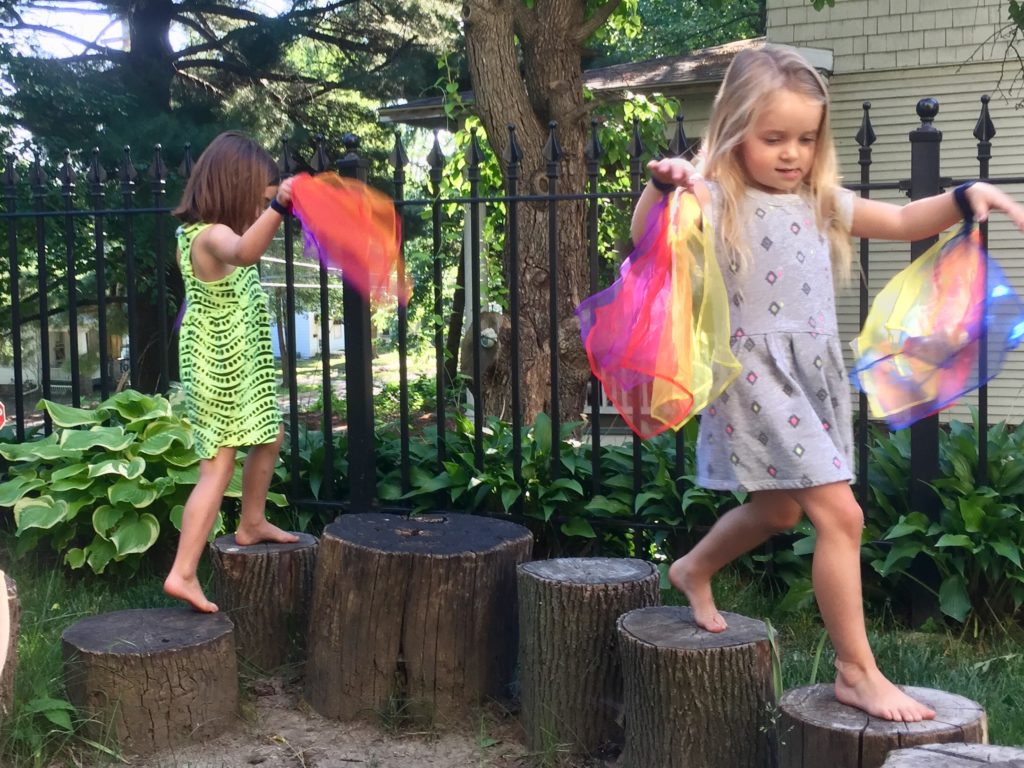
By exposing our children to STEM learning opportunities through everyday play, we are prepping them for success in math, science, technology and engineering when they move on to elementary and middle school.
So serve up some warm cinnamon rolls with a side of STEM this summer! Your students will be glad you did.
Those are great ideas to try.
I love the STEM learning opportunities. Exploring math, science, technology and engineering, are multiple facet particular for kids success.
What a great way to incorporate stem!